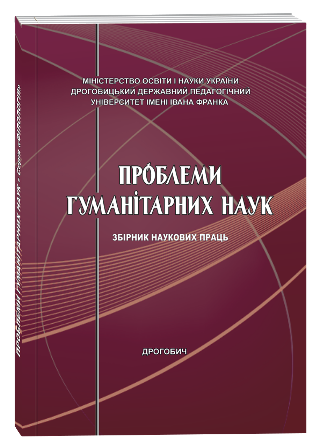PECULIARITIES OF AMERICAN SLANG REPRODUCING IN A FILM DISCOURSE
DOI:
https://doi.org/10.24919/2522-4565.2023.57.9Keywords:
text, film text, film discourse, slangAbstract
The article is devoted to the study of the concepts of film discourse and slang. Contemporary American slang is a linguistic phenomenon that reflects cultural, social and technological changes in modern society. Slang includes colloquial vocabulary and jargon. From a linguistic point of view, slang should be distinguished from such layers of vocabulary as regional dialects, jargon, obscenities, and vulgarities, although slang has common characteristics with each of these layers. There is a distinction between primary and secondary slang. Primary slang is mostly associated with a group of people who try to strengthen their solidarity within that group by using certain specific vocabulary. Secondary slang is more modern, not associated with a particular group in society. The lexical items used in secondary slang are spread through television, movies, and music, rather than through personal interaction within members of certain groups. Slang is classified according to the sphere of use – general and special (professional). Film text is a complete and complete message that embodies the author's representation of a certain idea, expressed through verbal and non-verbal signs, organized following the concept of a collective functionally differentiated author using a cinematic code, recorded in the form of a sequence of frames and intended to be shown on the screen for individual or collective audiovisual perception. Translation transformations play a special role in the reproduction of slang. when analyzing the film Deadpool in Ukrainian, we identified the use of such transformations as: replacement, addition, omission, compensation, euphemization and dyspheminization. As our analysis has shown, one of the most common ways to translate slang is to use substitution.
References
Вєдєрнікова Т. В. Особливості функціонування сучасних американських та британських сленгізмів. Вчені записки ТНУ імені В. І. Вернадського. Серія : Філологія. Журналістика. 2021. Том 32 (71). № 2. Частина 1. С. 107–113.
Демецька В., Федорченко О. До проблеми перекладу кінотекстів. Науковий вісник Херсонського державного університету. Серія «Лінгвістика». 2010. IV. С. 239–243.
Журавель Т. В., Хайдарі Н. І. Поняття перекладацьких трансформацій та проблема їх класифікації. Науковий вісник Міжнародного гуманітарного університету. 2015. Т. 19. №. 2. С. 148–150.
Медвідь О. М., Часовських А. А. Відтворення лінгвостилістичних особливостей кінотексту при дублюванні англомовних фільмів українською. Procedia–Social and Behavioral Sciences. 2015. №. 212. С. 237–241.
Мельник М. Є. Кінотекст як особливий тип дискурсу. Сучасні дослідження з іноземної філології. 2014. № 12. С. 123–127.
Панченко О. І. Лексико-семантична класифікація англійського молодіжного сленгу. Вчені записки ТНУ ім. В. І. Вернадського. Сер. Філологія. Журналістика. 2021. Т. 32. №. 71. С. 190–194.
Паршак К. Д. Текст як об’єкт лінгвістичного дослідження. Науковий часопис НПУ імені М. П. Драгоманова. Серія 10 : Проблеми граматики і лексикології української мови. 2014. Вип. 11. С. 196–199.
Словник української мови : в 11-ти т. / ред. І. Назарова. Київ : Наукова думка, 1978. Т. 9. 916 с.
Ставицька Л. Арго, жаргон, сленг. Київ : Критика, 2005. 464 с.
Яременко В., Сліпушко О. Новий тлумачний словник української мови : у 4-х т. : для студентів вищих та середніх навальних закладів. Київ : Аконіт, 1998. Т. 4. 944 с.
Flexner S. B. New Dictionary of American Slang / Comp. by R. Chapman. New York : Harper and Row, 1986. 498 p.
Munthe P. R., Arifin M. B., Setyowati R. An Analysis of Slang Words in IT Movie, 2023. URL: https://www.researchgate.net/publication/377834896_An_Analysis_of_Slang_Words_in_IT_Movie.
Quirk R. A Comprehension Grammar of the English Language. New York : Longman Group Ltd., 1995. 176 р.
Zaichenko S. Film Discourse as a Powerful Form of Media and its Multi–Semiotic Features. In The European Proceedings of Social & Behavioural Sciences, 2019 URL: https://www.europeanproceedings.com/article/10.15405/epsbs.2019.08.02.74.



